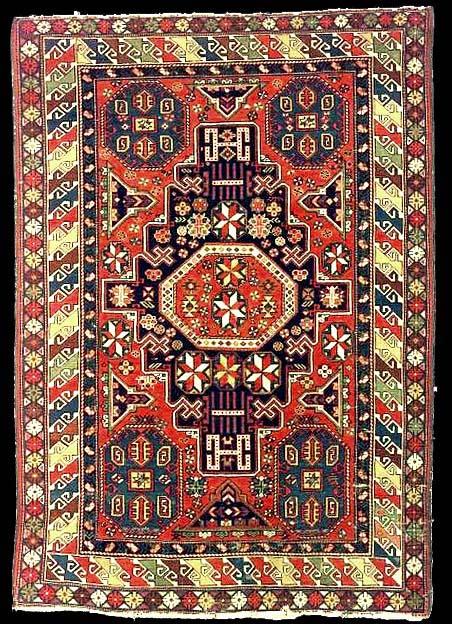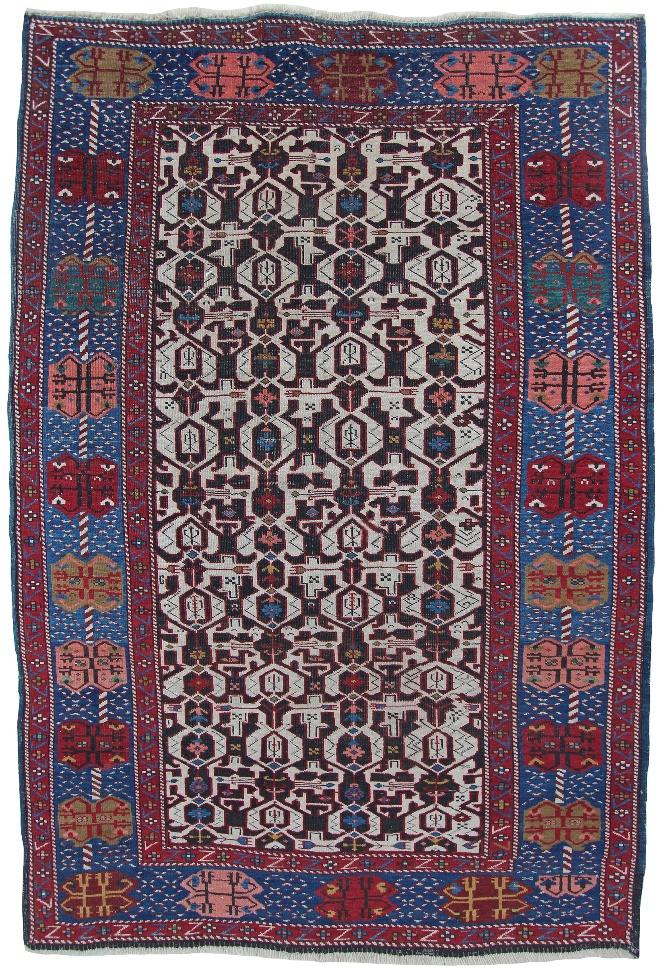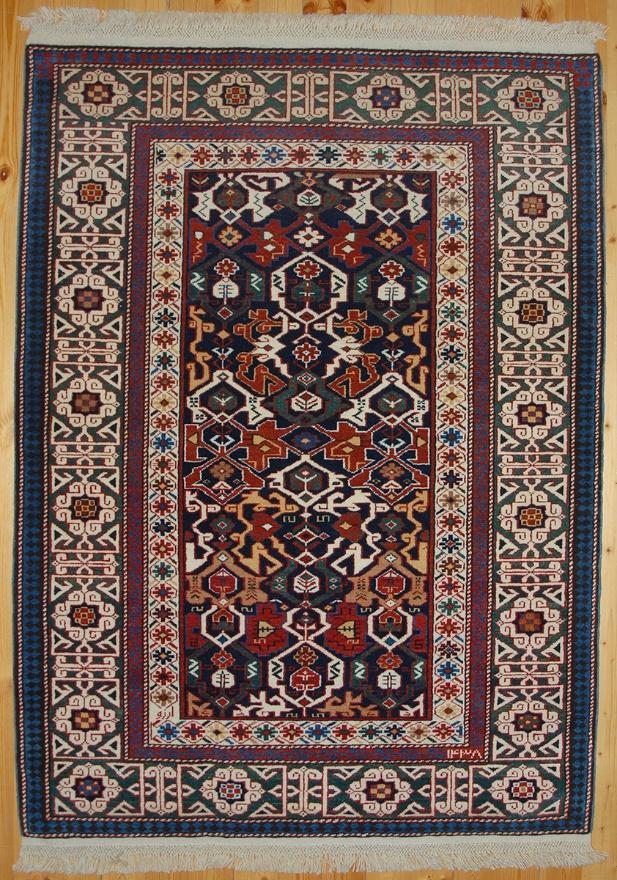Konaghend (Konagkend, Qonaqkənd) Rugs

Konaghend, Konakand Konagkand, Ordutch-Konagend, is a village south of Quba in the northeastern Caucasus. Quba (also Romanized as Kuba, Guba and Kuwa) lies on the north-eastern slopes of Shahdag Mountain on the right bank of the Kudyal River.
Quba is the capital of the Quba Rayon (district) of the Azerbaijan Republic, close to Dagestan. It used to be a big weaving center in northern Caucus. In the city of Quba, located a carpet making company called “Qadim Quba” meaning “Old Quba”. Branded as ‘Kuba’ these rugs are the finest of all Caucasian rugs.
Kuba rugs and runners have been named after towns and villages around the city. Quba rugs are the most finely knotted of all Caucasian rugs and Konaghend knitting is finer than Quba’s average. These dense rugs have the most intricate of all Caucasian field designs.
Technical aspects and the structure of Konaghend Rugs
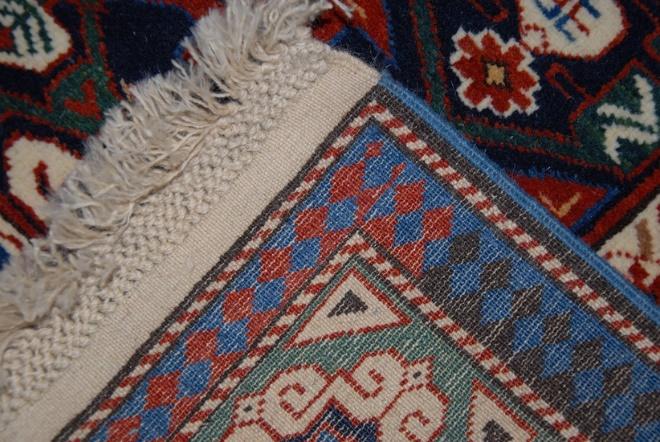
Konaghend knitting is finer than Quba’s average and the pieces are dense. These rugs have an average knot density of 127 knots per square inch. Knots are symmetric (Turkic). Wool is the main raw material. Wefts may be either cotton or wool, though the latter is more likely. Rug sizes are common. These rugs are twice as long as they are wide. Runners also could be found.
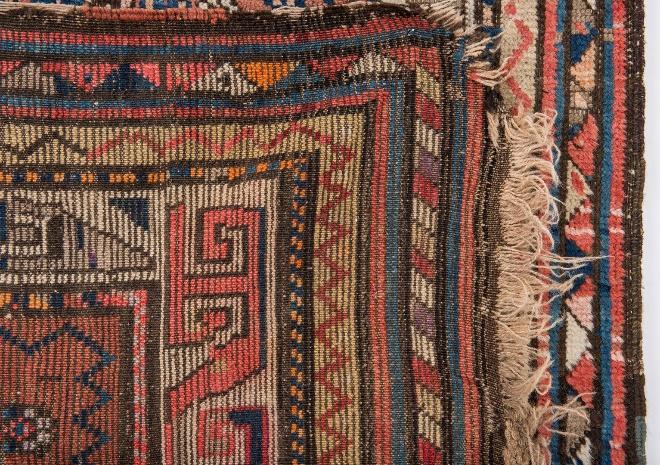
Dyeing and painting of Konaghend rugs
The master dyers of Quba obtained the most saturated hues with which weavers bring life to their simple or complicated geometric shapes. Interweaving field patterns in Konaghend all-over designs are colored opposite to the field (usually with interplays of light and dark) while in the empty space between the interweaving patterns are usually filled with tiny motifs in any number of colors.
Madder rose, deep yellow, camel, azure, indigo, pistachio, apricot, cream and dark green used artistically for both dominant and secondary colors as well as undyed wool.
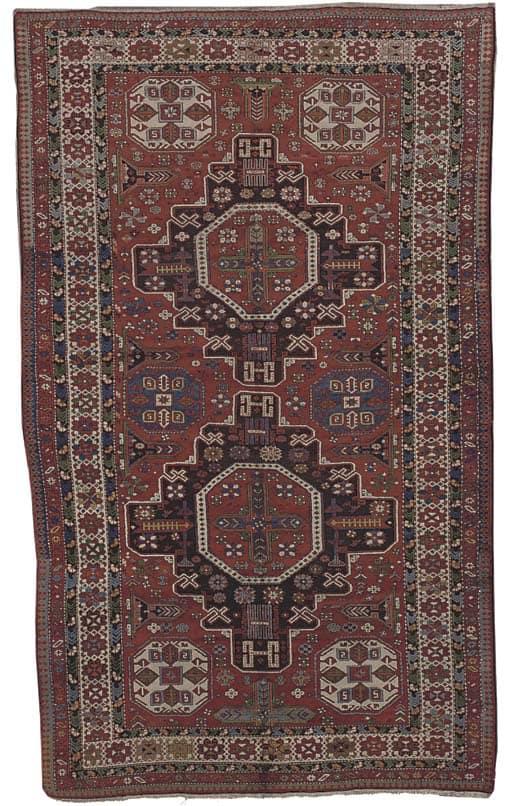

Designs and patterns of the Konaghend rugs

Two types of design used in Konaghend. A central-medallioned and an all-over one.
The latter, which is more common, consisted of interweaving elements based on conjoined hexagons similar to Anatolian Ushak’s lotto designs. Kufesque borders, usually used in both the Anatolian and Caucasian designs, emphasize the resemblance.
The other type of design attributed to Konaghend has a large central medallion and a small one in each corner. Rows of such quintet used to design runners and long soumaks.
